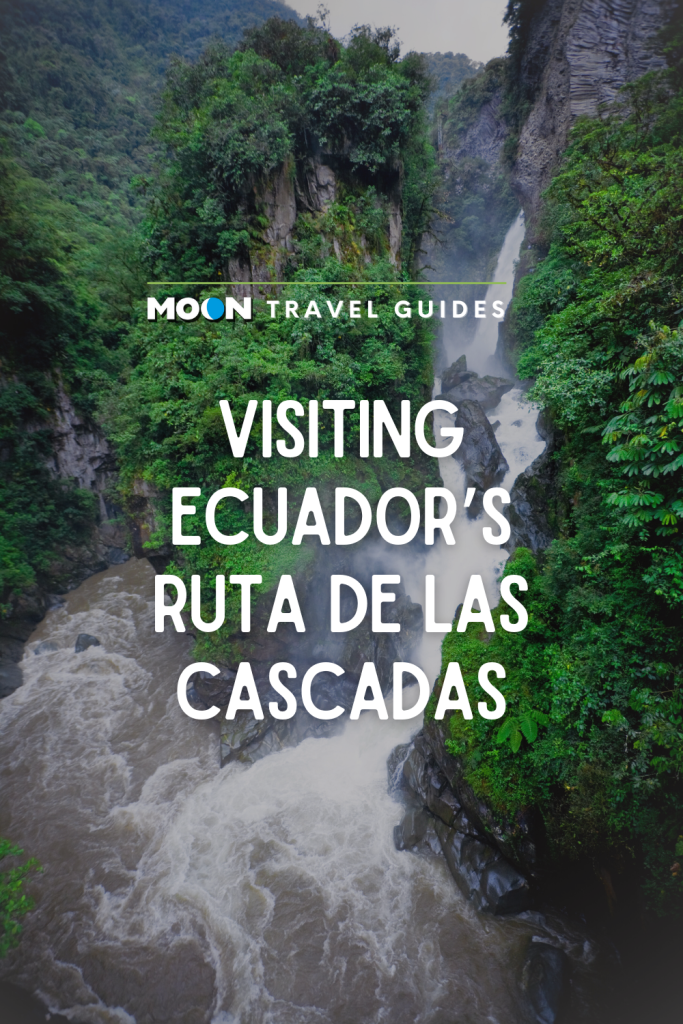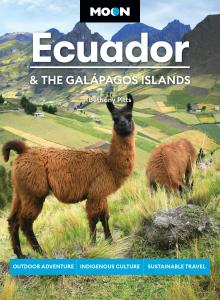Visiting Ecuador’s Ruta de las Cascadas
The 61-km (38-mi) road heading east from Baños to Puyo follows the spectacular Río Pastaza gorge, dropping nearly 1,000 m (3,280 ft) in elevation through rapidly changing terrain that becomes increasingly tropical as it approaches the Amazon. There is a series of waterfalls along the first half of the road, known as the Ruta de las Cascadas, including the Pailón del Diablo, the star of the show. Along the ruta, adrenaline seekers can whiz across the gorge via cable cars and zip lines, or jump from the San Francisco bridge.

Tours
There are several ways to explore the Ruta de las Cascadas. The Terminal Turistico de Chivas (tel. 97/935-2021) offers daily tours in an open-sided bus (10:30am, 1:30pm, 3:30pm, 2.5 hours, $5). Chebas Tours (tel. 98/401-2157) offers tours in an open-top double-decker bus at 10:30am, 1:30pm, and 5pm, with a nocturnal tour to Pailón del Diablo at 9pm ($5 pp). A private taxi costs $25 for a three-hour trip with stops. Buses with the company Luna Sanchez go the Pailón del Diablo every 15 minutes 6am-7pm from the corner of Alfaro and Martínez ($0.50). From the main bus terminal, buses destined for Puyo can drop passengers off at the various waterfalls along the way.
Biking
By far the most popular and fun way to explore is by bicycle, especially as nearly the whole route is downhill, with trucks waiting at Río Verde and Machay for the return trip to Baños. Most hotels and tour agencies in town rent bikes ($8-10 pp) and provide maps. Check the state of your bike carefully before setting out, and make sure it comes with a lock, so you can leave it at the various stops along the way. Take the number of the bike company with you so you can contact them if necessary. If you run into trouble, flag down a camioneta.

Leaving Baños, the initial part of the biking route is on the main road and can feel a little hair-raising, especially as it passes through a tunnel. The first waterfall you come to is Agoyán, at around 3 km (1.9 mi). At around 7 km (4.3 mi), you’ll pass one of the most impressive waterfalls on the route, the Manto de la Novia (Bride’s Veil). Río Verde, 15 km (9.3 mi) from Baños, is the access point for possibly Ecuador’s most spectacular waterfall, the Pailón del Diablo (Devil’s Cauldron, $2 entry), well worth the 20-minute hike into the forest. A series of paths and viewing platforms allow close-up encounters of the thundering water, which is lit up at night. It’s an exhilarating experience, but be prepared to get soaked with spray.
Many people turn back at Río Verde, and trucks wait here to take cyclists and bikes back to the bus terminal in Baños ($5) until 6pm. Those who continue for another 2.5 km (1.6 mi) will reach the village of Machay, where trails lead up into the hills to a series of small waterfalls. The most impressive, Manantial del Dorado, is at the end of the trail, but this is quite a hike—over four hours there and back.
Accommodations
Río Verde has several cafés, restaurants, hostels, and shops selling local crafts. Of the accommodation options, one of the best is Miramelindo (Vía Baños-Puyo km 15, tel. 99/587-3307, Facebook/Instagram @hotelmiramelindo, $108 s/d, including buffet breakfast), which has beautiful guest rooms beside the river, an orchid garden, a heated pool, and a spa.
Another good option is the friendly Camping Los Quindes (Vía Baños-Puyo, tel. 96/152-8252, $6.50 campervans, $8 pp camping, $12 dorm, $35 s/d or $50 with breakfast), which offers covered camping spaces (bring your own tent or hire one there) and simple guest rooms with private bathrooms. There is a guest kitchen, a dining area, hot showers, a pool, a Ping-Pong table, good Wi-Fi, a working area for digital nomads, and telescopes for birding. Ten species of hummingbird, the cock-of-the-rock, and a family of owls are all regularly seen. Camionetas are available in Machay for the return journey to Baños.
Newsletter Signup
By clicking ‘Sign Up,’ I acknowledge that I have read and agree to Hachette Book Group’s Privacy Policy and Terms of Use
Pin It for Later


